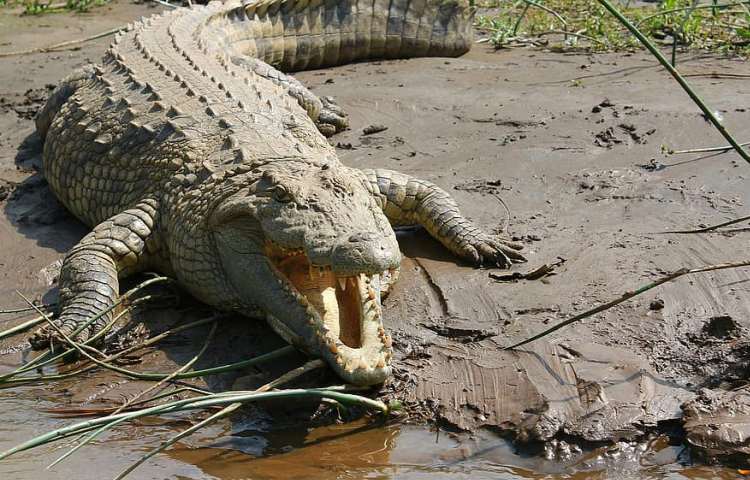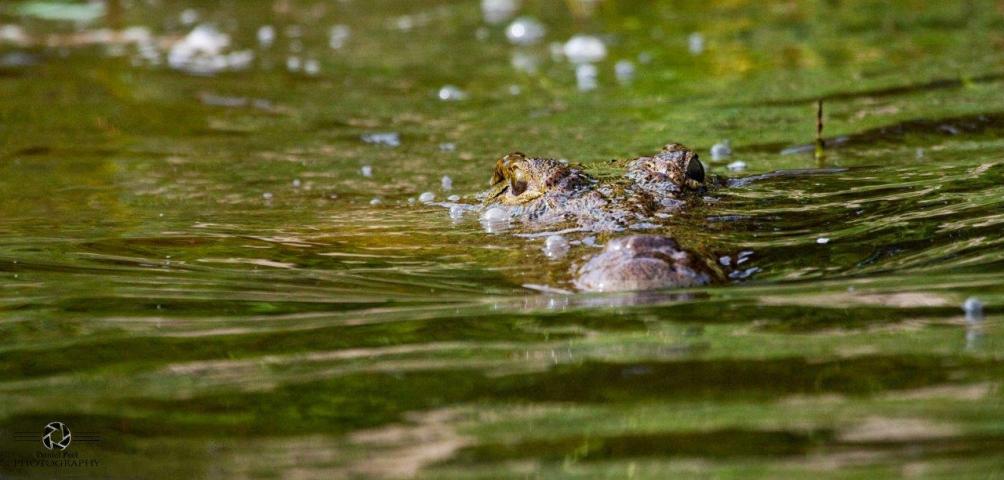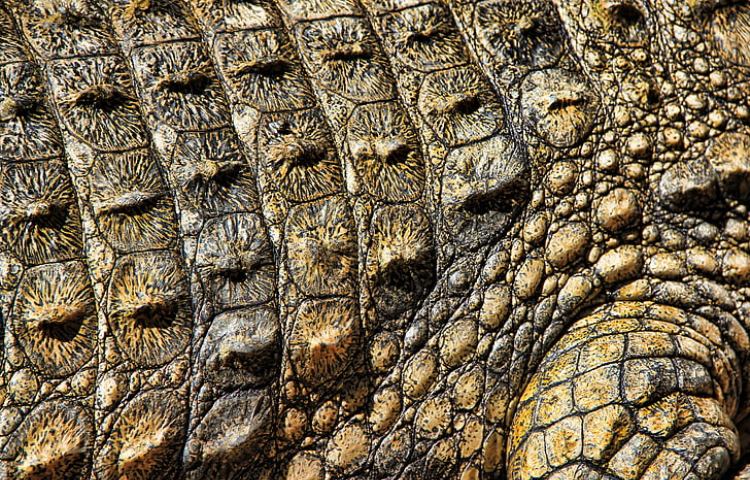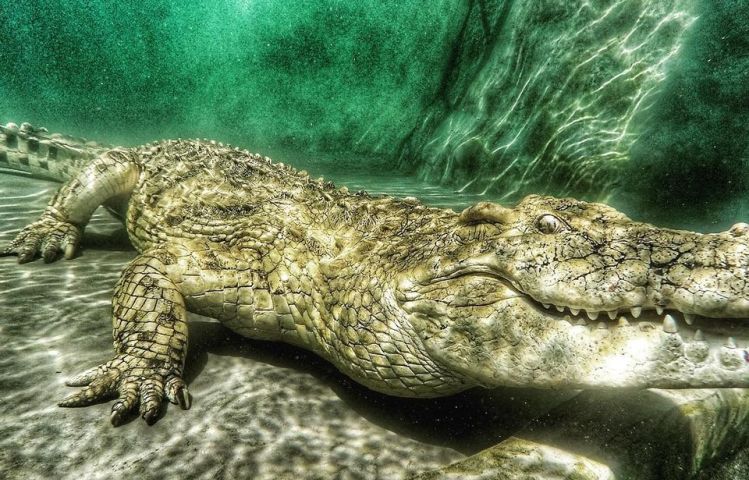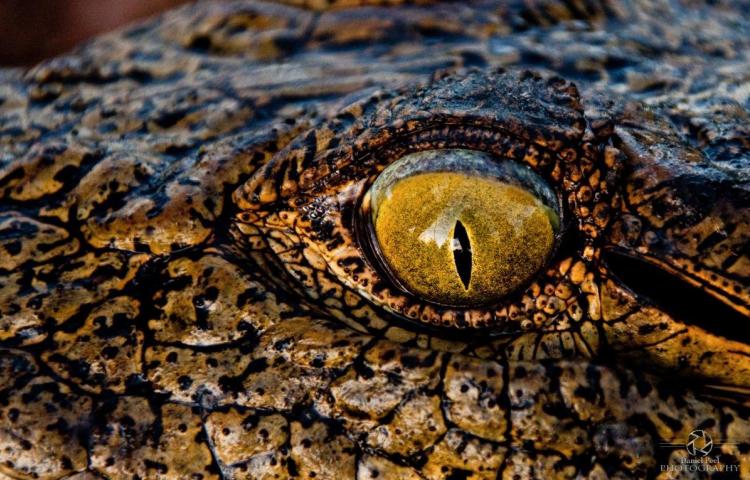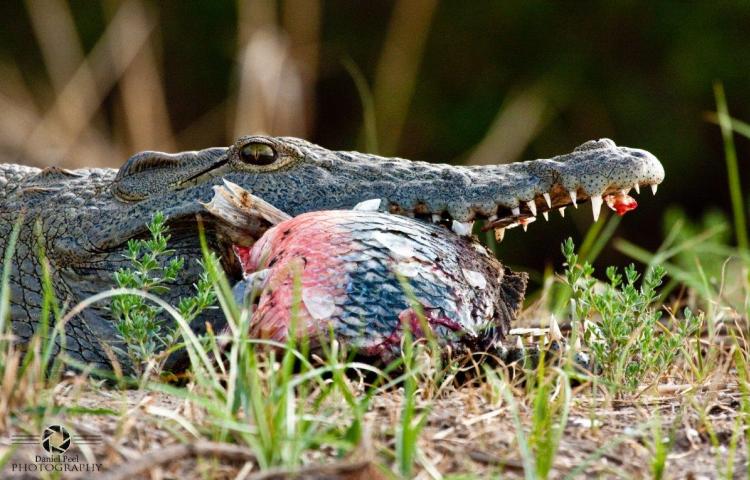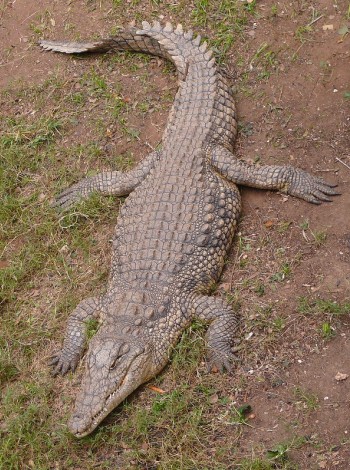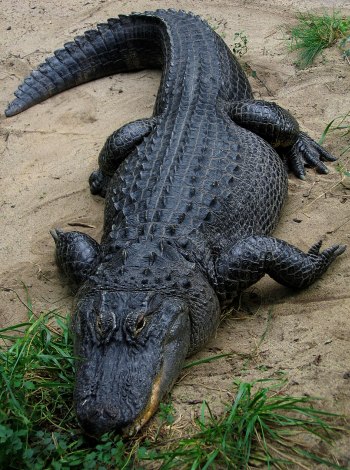Nile CrocodileAn apex predator at the top of the food chain, these incredible creatures have earned their fearsome reputation as one of the most patient and sly hunters on the planet.
Nile Crocodile
Quick Facts
• Latin name: Crocodylus niloticus Where Does the Nile Crocodile LiveThe Nile crocodile is one of the most widespread of the 14 Crocodylidae species. Occurring in the freshwater lakes and rivers of Africa. It dominates the waters of 26 countries throughout the continent, from as far North as the Nile delta down to South Africa. Although it is a freshwater species they have been known to tolerate saline conditions like their Saltwater cousins from South East Asia, Australia and Micronesia. The order Crocodilia, covers 24 living species, which are then further divided into 3 families. The 14 Crocodylidae species (‘true’ crocodiles), 8 Alligatoridae species (Alligators and Caimans) and 2 Gavialidae species (Gharial and Tomistomas).
Nile crocodiles in the water What is a Crocodile?The Crocodile is a reptile and not an amphibian. Amphibians are toads, frogs, newts and salamander, whose skin must stay moist for it to absorb oxygen. Lizards, snakes, turtles, crocodiles and alligators are all types of reptiles, whose unique skin consists of bony plates or scales or a combination of the two. Being cold-blooded animals they cannot generate their own heat and rely on basking in the sun to do this, which is why you see so many crocodiles lying on the sandbank, soaking up the suns rays. These prehistoric reptiles have inhabited the waters of Earth for over 95 million years. Ancestors of the Archosaurs 'the ruling lizard' of the Early to Late Triassic period 250 million years ago, they outlived the Dinosaurs. Once crocodiles evolved into the form we know today, they changed very little in the following millions of years.
The reptilian scales How Long Can a Crocodile Survive Without Food?Crocodiles have a series of intriguing adaptations that help them stay on top of their game. With the most acidic stomach of any living animal, crocodiles can go for up to a year without a meal, at which point the body may start feeding on fat reserves and survive for another year. Crocodiles make use of what is known as 'Gastroliths', these are rocks in the stomach that help to crush and break down food even further. The high acid levels mean that they can digest bone and horn, which most animals cannot. They will use every bit of nutrient they can extract from their meal. How Long Can Nile Crocodiles Stay Underwater?A highly evolved circulatory system means crocodiles can stay underwater from more than an hour. Holding their breath, their unique heart will divert blood away from 'unnecessary' organs that with use oxygen in general muscle metabolism.
An albino crocodile underwater in Victoria Falls (by Croc Cage Diving, Victoria Falls) Through a special valve called the 'Foramen of Panizza' the blood route can be changed at will. Above water, the four-chambered heart functions much like our own but when they dive this system changes to effectively function as a three-chambered heart, in this way they conserve precious oxygen needed to power the brain and heart and vital organs. The crocodile head is arranged linearly, with the nostrils, eyes and ears on top of the head. They can sit for hours underwater with only the top of their camouflaged head exposed. The nostrils and ears are muscular slits that can be closed while they are underwater, stopping and water from entering. The highly refined vision is protected by a third eyelid, also known as a nictitating membrane, that slides across the eye while they are underwater acting much like a set of swimming goggles. The eyes can also be retracted into the head for protection during an attack. And the tapetum lucidum a reflective layer of crystals behind the retina of the eye allows them to hunt in very dim lit conditions of the murky waters of the African rivers.
Eye of the crocodile What Do Nile Crocodiles Eat?Crocodiles are amazingly clever animals. Their hunting strategy is fairly wide depending on the individual's size, the most well know is the large adults employing stealth and patience at the water's edge, hoping for an unsuspecting animal to wander down to drink. Smaller crocodiles have a hugely varied diet, consisting of pretty much anything they can catch. Baby crocodiles even feeding on grasshoppers and aquatic insects. Adult crocodiles actively hunt water-birds, fish and any animal that ventures down to the water's edge to drink.
Catching fish How Do Nile Crocodiles Eat?The crocodile has large, blunt conical shaped teeth that are always being replaced. These teeth are not designed for slicing or cutting meat but coupled with the most powerful bite force in the animal kingdom (up to 5000 pounds per square inch) they are designed to latch onto prey and not let go. The prey is then drowned. Crocodiles have a gular flap, a flap of skin at the back of the throat which stops them taking in water if they open their mouth underwater. This means they cannot swallow underwater and must come to the surface to eat. Smaller prey is swallowed down whole, but for bigger prey, small chunks have to be torn from the carcass using the infamous 'death role'. This practice involves the crocodile attaching onto a portion of the carcass and using its incredibly powerful tail, flicking itself into a roll, pulling off the meat which it can them swallow. Do Crocodiles Lay Eggs?Crocodiles have an elaborate mating ritual. Mates are chosen not on age but size, the male will attract the female through various bellows, vibrations and water slaps. A few months after mating between 35-50 eggs are laid in a hole on a sandbank dug by the female. At this stage, these females are extremely aggressive and highly protective of the nest. Despite her protection, these nests are often raided, with the main culprit being the water monitor lizard. It is estimated that only 10% of the eggs laid hatch and only a further 1% of those youngsters survive to adulthood. Being a 'temperature-dependent sex determination' species, crocodiles either hatch as males or females depending on the temperature that the eggs developed at. Higher temperatures produce males and lower temperatures produce female offspring. Once the babies have broken out of the egg using a specially designed 'egg-tooth' they start calling and the mother will react by digging them out and transporting them to the water in her mouth. They are then gathered into a nursery where she protects them for a little while before they move off to fend for themselves. What is the Difference Between a Crocodile and an Alligator?The famous American Alligator of the south eastern United States, is well known and often compared to the Nile Crocodile of Africa. Although they are in different families there is an overall similar body structure. There are, however, a few marked differences to keep an eye out for. Firstly, look at the shape of the snout. Alligators have a wide, short U-shaped snout while crocodiles tend to have a much longer pointed V-shape.
Left: Nile crocodile (by
Zachi Evenor) Next look for the teeth, an alligators mouth is designed in such a way that the bottom row of teeth fit nicely into the closed jaw, a crocodile’s mouth shows the top as well as the bottom teeth which are designed to slide into grooves along the outer edge of the closed jaw. Another less consistent but notable feature is the colour of the animal, alligators tend to be grey or black while crocodiles tend to be more olive or tan. Are There Nile Crocodiles in Victoria Falls?As Victoria Falls is situated on the Zambezi River, there is most definitely crocodiles in Victoria Falls. The Zambezi River has a very high population of crocodiles and if you visit Victoria Falls and go on a boat cruise you will without a doubt see one of the creatures. These range in size from newly hatched babies to enormous crocodiles of up to 18ft. Victoria Falls also has a crocodile farm where crocodiles are bred for their skins, which is a lucrative business. The crocodile farm is open to the public and is a popular attraction.
Please click on the link
Nile
Crocodile for more information
|
|
||||
|
|
|||||
|
|
|||||
|
| |||||
